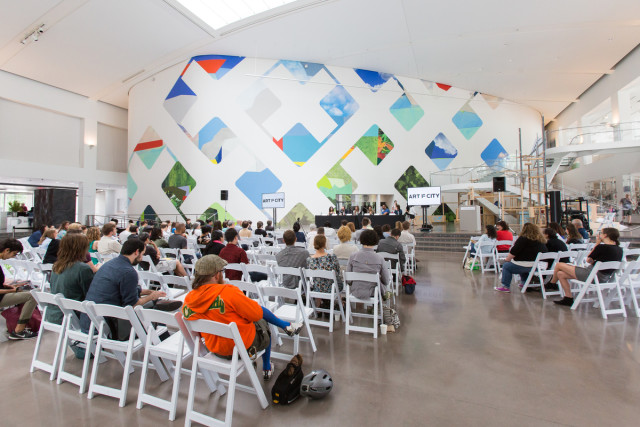
Stay in New York at the Queens Museum. All photos by Liz Ligon of Liz Ligon Photography.
The rent in New York sucks. It’s really high. It’s only getting higher. Is there any end in sight?
Last Saturday roughly 200 people descended on the Queens Museum to attend Stay in New York, a six-hour long conference organized by Art F City, in the hopes of finding an answer to this question. We didn’t come up with a grand solution (sorry), but certainly there were a few useful takeaways. We’ll release the full video documentation once its been edited next week, but in the meantime, a few highlights and photos below. (For a full recap, check out Robin Grearson at Hyperallergic.)
1.
Affordable space “is not just an artist problem,” artist Wayne Hodge reminded audiences, as he recalled his experience on the community and gentrification panel. Wayne Hodge told a cautionary tale of how he landed a cheap studio in Harlem with a bunch of other artists, only to learn through neighbors and a series of suspicious events, that the studio was a
Superfund-designated building. The landlord took advantage of artists who were not familiar with the building’s history—previously, it was a school that had been shut down due to concerns for children’s health—and had them sign licensing agreements, not leases, which limited their tenant rights. Hodge said that reaching out to his neighbors helped him fight the landlord, even though he eventually moved out. The site is now a school again.
It’s a shitty story, but I thought it was important to Stay in New York, and for a number of reasons. 1. Even if painful, it’s good to be reminded that we won’t win all our fights. There are real losers in this game, and they could be you. 2. This battle is bigger than the artist community, and we can’t win it alone. Hodge’s successes in this battle were won because he connected with his neighbors; that’s something we all need to do.
2. Renters versus owners. As Corinna Kirsch observed over Twitter, there seemed to be a divide in the conference between those who felt that purchasing real estate was the best defense against the rising cost of rent and those who did not anticipate being able to buy—or even wanting to buy—and therefore wanted better rent protections. As such, we saw community developer Shawn McLearen say that affordability comes down to financing and investment on the community panel, and artist and writer Adeola Enigbokan advocate for renting on the securing affordable workspace panel.
3. Public versus private advocacy. On the ownership panel, Deborah Brown said she found policy-driven activism inefficient, which is why she eventually switched to her own means of supporting artists through the property she owns. She runs Storefront Ten Eyck.
4.
Play the affordable housing lottery. Esther Robinson of
ArtHome recommended everyone do this. She also mentioned that the paperwork required is similar to home ownership, so this could help get you prepared if you think you might want to buy property in the future.
5. A coalition is needed. The prospect of building a coalition that could represent the teeming culture of small art groups and non-profits working to secure affordable space got a lot of traction on the securing affordable space panel. This isn’t a surprise—the panel was primarily composed of activists and non-profit administrators—but there seemed to be a lot of energy behind the idea. Afterward the panel, I heard attendees plotting about how to make this happen—a very good step forward IMO.
6. Addressing the issues means accepting and working with contradictions. Tamara Greenfield, the deputy director of Spaceworks, spent a lot of time on the securing affordable workspace panel questioning the strength of the argument that artists are being forced out of the city; she felt it only enforced the myth that they are flighty and move where ever it is convenient. (Also, according to the Center for Urban Future, there are more of us in the city than ever before.) In her eyes, Stay in New York demonstrated that artists are invested and do fight for important causes. To my mind, that was a very powerful argument. Meanwhile, one panel later on ownership, ArtHome’s Esther Robinson talked about how the mobility of artists was a strength we need to tap into and utilize; her mobile studio project, which allows artists to secure an actual asset while renting in the city, was means of doing that. And of course, she’s absolutely right.
A great example of opposing views that are paradoxically both correct.
7.”We need to accept that we have to fight to stay in New York as a precondition for living here,” Chloe Bass told the audience. I couldn’t get a read on how the audience felt about that statement, but it certainly seemed like a drag to me, if not a recipe for burnout. During the Q&A, I asked Tom Angotti, Professor of Urban Affairs and Planning at Hunter College and the Graduate Center, how to prevent this. The takeaway? Get more people involved and then delegate (to prevent burnout from any one member).
Community, Gentrification, Displacement
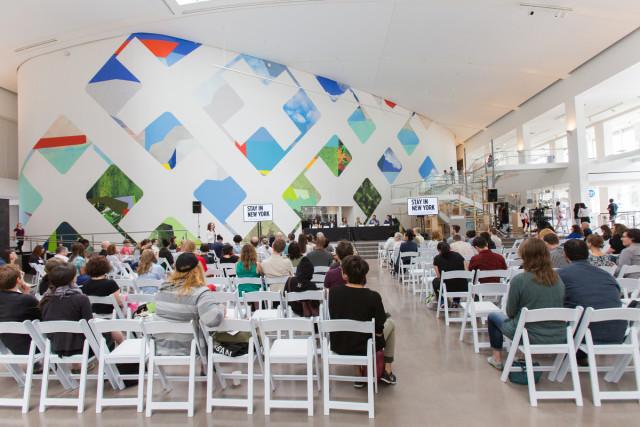
From afar, the Community, Gentrification and Displacement panel

The crowd after Community, Gentrification and Displacement disperses.
The Resource Center
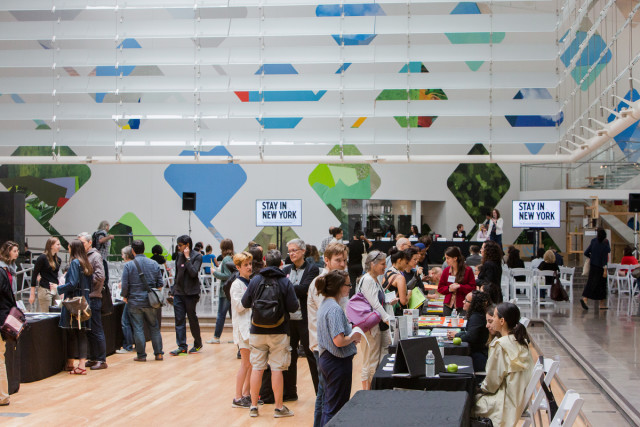
Alongside the conference, attendees could speak with organizations at the resource center.

More of the Resource Center
Lunch
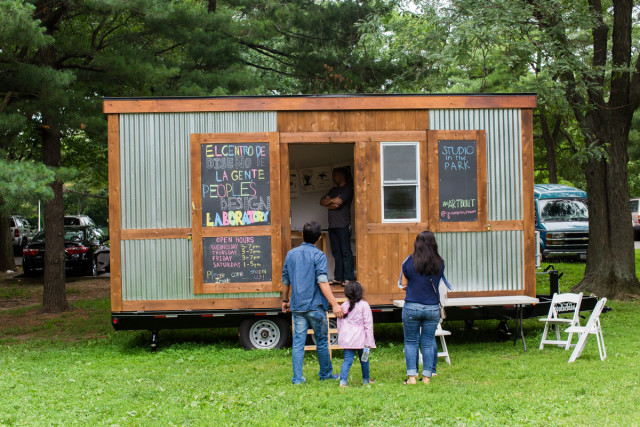
ArtBuilt mobile-studio tours took place over lunch.
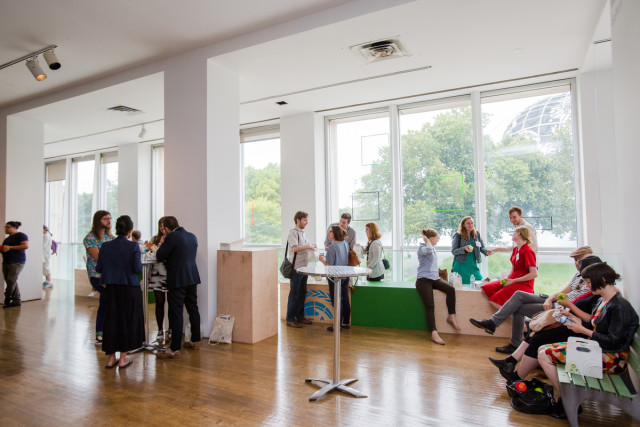
Attendees also had a chance to eat and chat with fellow creatives.
Securing Affordable Workspace
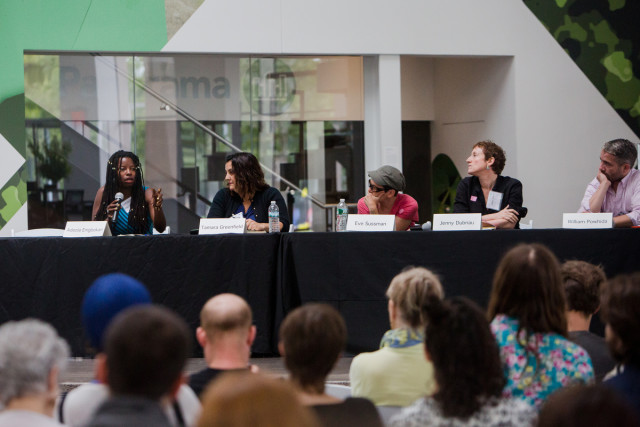
Securing Affordable Workspace, from left to right: Adeola Enigbokan, Tamara Greenfield, Eve Sussman, Jenny Dubnau, and William Powhida.

A Stay in New York crowd shot.
Ownership
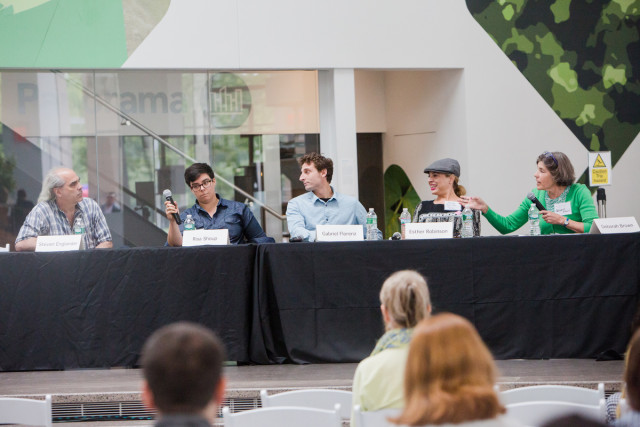
Ownership panel: Left to right: Steven Englander, Risa Shoup, Gabriel Florenz, Esther Robinson, and Deborah Brown.
Keynote with Tom Angotti
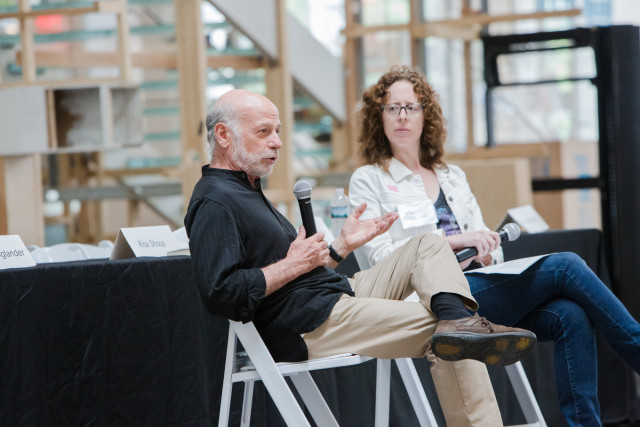
Tom Angotti and Paddy Johnson sit down to debrief on the conference during the keynote Q&A.













Comments on this entry are closed.